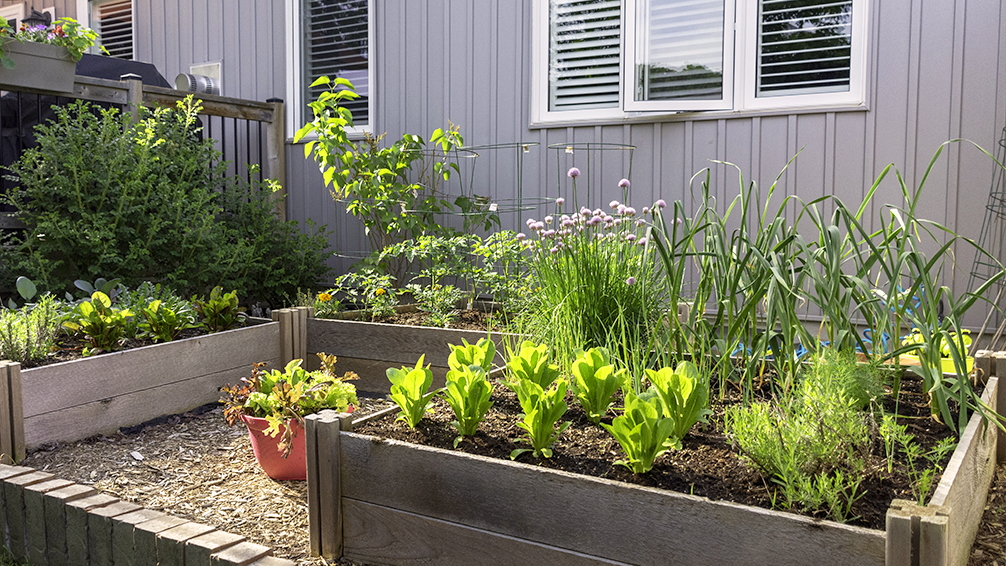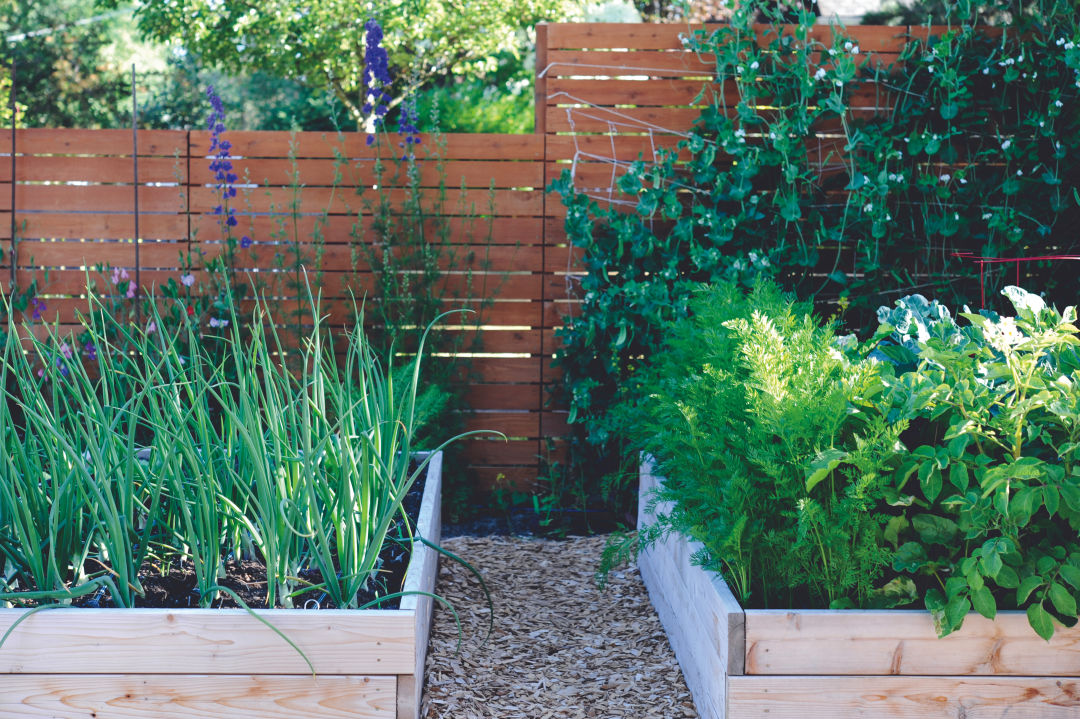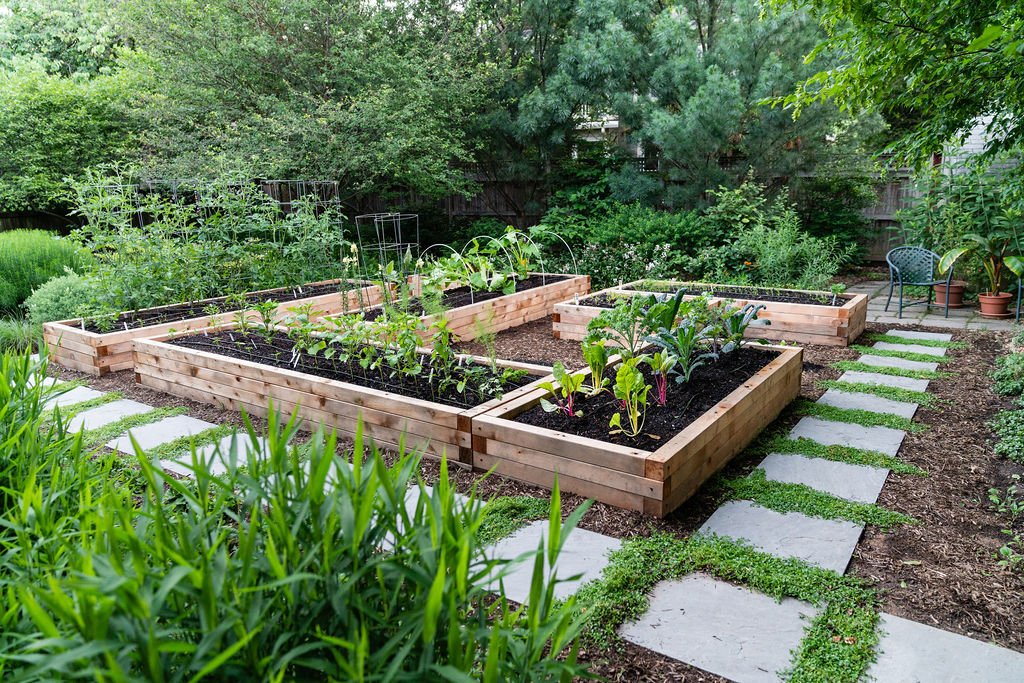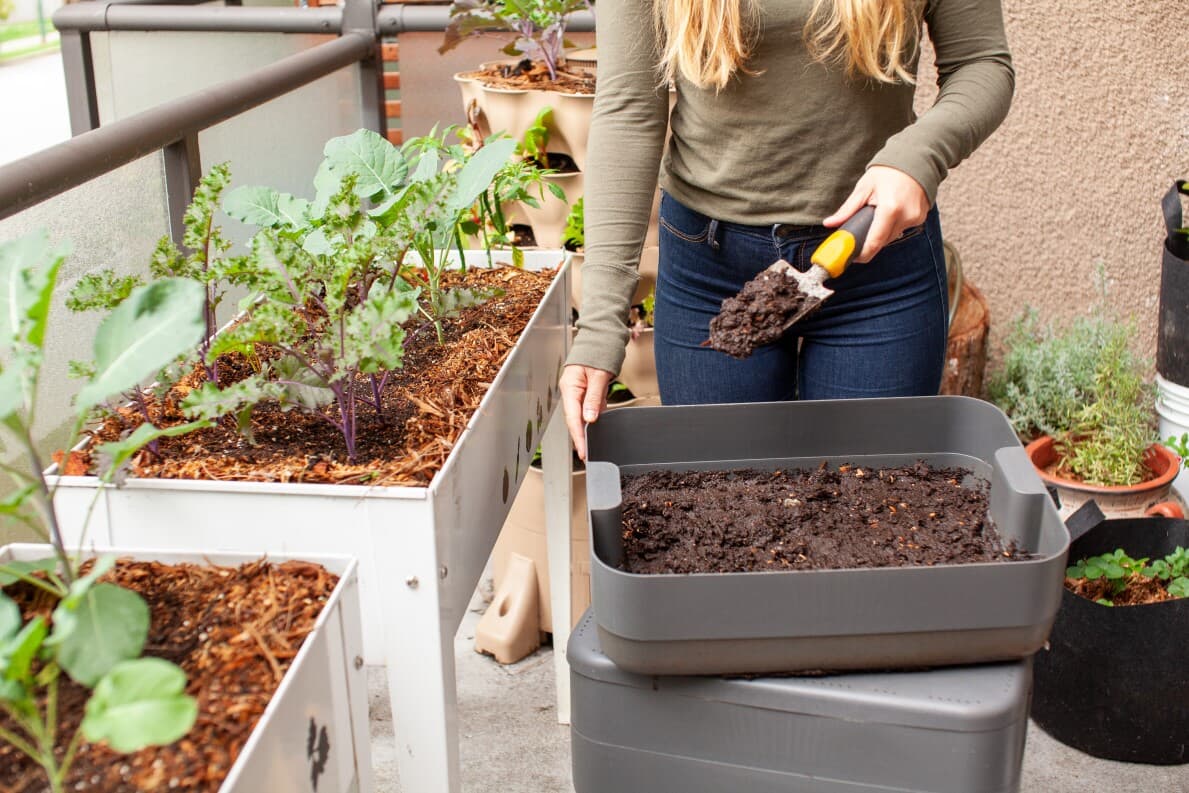How To Grow A Garden in Any Space
The Benefits of Growing a Garden
Growing a garden, whether you have a backyard or a tiny balcony, offers a plethora of benefits that go beyond just fresh and nutritious produce. It is a rewarding and therapeutic activity that promotes mental well-being and provides an opportunity to connect with nature.
One of the most significant advantages of gardening is that it doesn't require a large space or extensive physical labor. With the right techniques and tools, you can grow a variety of plants, from leafy greens to cherry tomatoes, even in small pots or patio containers. By choosing compact varieties or using vertical gardening methods like trellises for pole beans, you can maximize your outdoor space.
Apart from the joy of nurturing and witnessing your plants grow, gardening also brings environmental benefits. It reduces your carbon footprint by creating a sustainable source of fresh produce, decreasing the need for long-distance transportation. Furthermore, gardens attract pollinators like bees and butterflies, promoting biodiversity in your area.
Identifying What Space You Have to Work With

When it comes to growing a garden, the first step is identifying what space you have to work with. Whether you have a large outdoor area, limited ground space, or even just a small balcony, there are plenty of options for growing your own fresh produce.
Indoor areas can be utilized for gardening by using containers to grow plants such as leafy greens, cherry tomatoes, or herbs. Containers can be placed on windowsills, tabletops, or in small corners of the room. They offer the flexibility to move the plants around to ensure they receive the required hours of sunlight.
If you have an outdoor space, consider creating garden beds or raised beds for a larger garden. This provides plenty of ground space for growing a variety of vegetables and herbs. You can also maximize your space by utilizing vertical gardening, growing pole beans or runner beans on trellises, or using hanging baskets for compact crops like salad leaves.
When identifying your gardening space, it's important to consider the amount of available sunlight and the type of plants you want to grow. Some plants, like root vegetables or salad leaves, require less sunlight and can thrive in limited sun exposure. Others, such as indeterminate tomatoes or green beans, need several hours of direct sunlight.
Preparing Your Environment
Before you start growing your own garden, it's important to prepare your environment to ensure the success of your plants. Whether you have a small balcony, limited outdoor space, or even just a sunny window sill, there are steps you can take to create a thriving garden in any space.
Choosing the Right Soil
Choosing the right soil is crucial for the success of your garden. Rich and healthy soil provides essential nutrients and a suitable environment for your plants to grow and thrive.
When it comes to soil composition, a good mixture of sand, silt, and clay is important. Sandy soil allows for good drainage, preventing waterlogged roots. Silt gives the soil a silky texture and good water-holding capacity. Clay helps to retain moisture and nutrients, ensuring that your plants have access to what they need.
To improve the soil in your garden, start by incorporating fresh compost. Compost adds organic matter to the soil, improving its structure and fertility. Worm castings are another great addition, as they provide a boost of nutrients and help with soil aeration. Liquid fish emulsion is also beneficial, as it provides a quick source of nutrients for your plants.
Regularly testing your soil's pH level can also help you understand its composition and identify any deficiencies. Adjusting the pH level accordingly will create an optimal growing environment for your plants.
Deciding Where to Place Your Garden
When it comes to growing a garden, one of the first and most important decisions you'll need to make is where to place it. The success of your garden depends on factors such as sunlight exposure, available space, and existing structures or plants.
Start by evaluating the amount of sunlight your space receives. Most vegetable plants require at least six hours of direct sunlight daily, so choose a location that gets adequate sun. Take note of any buildings, trees, or other structures that may cast shadows and block sunlight.
Next, consider the available space. If you have limited ground space, consider utilizing garden beds or containers. Compact crops like leafy greens, cherry tomatoes, and root vegetables can be grown successfully in smaller areas. Opt for dwarf varieties of vegetables that require less space but still produce abundantly.
If your outdoor space is still lacking, don't worry! You can still have a productive garden by utilizing patio containers or vertical gardening techniques. Choose pole beans, which can grow vertically, and hang pots of herbs or salad leaves on walls or railings. This allows you to maximize your space efficiently.
Finally, take into account any existing structures or plants in your chosen location. Avoid planting your garden next to structures that could cause damage, such as downspouts or air conditioning units. Consider how neighboring plants may affect your garden's growth and plan accordingly.
Utilizing Natural Resources
Growing a garden in any space is possible when you utilize natural resources such as sunlight and water. Sunlight is crucial for plant growth as it provides the energy needed for photosynthesis. Assess the amount of sunlight available in your space by observing the hours of direct sunlight it receives each day. Leafy greens and vegetables like cherry tomatoes and green beans usually require at least 6 hours of sunlight, while root vegetables and herbs can thrive in slightly shadier areas.
Water is equally important to ensure healthy plant growth. Assess the watering needs of your plants by understanding their specific requirements. Some plants prefer moist soil while others prefer drier conditions. Water your plants thoroughly, making sure the soil is evenly moist but not waterlogged. Consider utilizing rainwater if possible, by installing a rain barrel or using a water collection system. This helps conserve water and provides plants with natural nutrients.
To optimize water retention, use organic matter like compost to improve soil structure and drainage. Additionally, choose containers or garden beds with proper drainage holes to prevent waterlogging. During dry periods, water your plants deeply, allowing the water to reach the roots. Avoid watering during the hot afternoon sun to minimize evaporation.
Planning Around Existing Structures and Plants
When designing your small space garden, it is essential to plan around existing structures and plants. These elements can have a significant impact on sunlight exposure, airflow, and root competition.
Begin by evaluating the existing structures and plants in your garden. Observe how they cast shadows during different times of the day and consider their impact on sunlight availability for your new garden beds. Additionally, assess how they affect airflow in your space, as stagnant air can lead to disease and pest issues. Lastly, take note of any nearby plants that may compete with your new additions for nutrients and water.
Once you have identified these factors, you can develop strategies to optimize your garden's use of available space. Pruning existing plants to allow more sunlight into your small garden beds can be a practical solution. Additionally, consider transplanting or repositioning plants to improve airflow and reduce root rot competition.
Companion planting is another useful technique to maximize plant health and productivity in limited space. Pairing plants that have mutually beneficial relationships, such as those that deter pests or enhance soil fertility, can result in a more productive garden.
Planting Strategies for Limited Spaces

When it comes to gardening, having a limited amount of space should never be a hindrance. With the right planting strategies, you can grow a thriving garden in any space, whether it's a small patio or even just a windowsill.
Planting in Containers and Pots
If you have limited space or no ground to work with, don't worry - you can still create a thriving garden! Planting in containers and pots is a fantastic solution for anyone looking to grow their own fresh produce in a confined area. Here are some essential tips to get you started.
Firstly, it's crucial to select the right container size. A 5-gallon pot is ideal for fruiting plants like tomatoes and peppers, allowing enough space for the roots to grow and the plant to thrive. Opting for plastic pots over terra cotta is advantageous as they retain moisture better, reducing the risk of the soil drying out.
Certain plants, such as tomatoes and green beans, require support to grow upright. Utilize trellises or cages to provide stability and ensure optimal growth for these plants. This also saves valuable space in your garden.
When it comes to choosing the plants for your container garden, consider peppers, tomatoes, cucumbers, and basil. These varieties are well-suited for container gardening and can provide you with an abundant harvest. Additionally, herbs like basil are aromatic and can enhance the flavor of your dishes.
Growing Compact Crops and Dwarf Varieties
When it comes to growing a garden in limited space, there are plenty of compact crops and dwarf varieties that can thrive and provide you with fresh produce. These smaller plants are perfect for gardens beds, patio containers, or even hanging baskets.
One great choice for a small garden is salad leaves such as lettuce, arugula, and spinach. These leafy greens can be grown in shallow containers or even window boxes. They have a quick growth cycle and can be harvested multiple times, giving you a steady supply of fresh greens.
Dwarf beans are another excellent option for limited space. With their compact growth habit, they can be easily grown in pots or small raised beds. Varieties like pole beans or runner beans can be trained to grow up trellises, making efficient use of vertical space.
Kale is a fantastic choice for any garden, but especially for small spaces. It doesn't take up much ground space and can be harvested regularly for its nutrient-packed leaves.
If you prefer root vegetables, baby beets are a great choice. These small, tender beets can be grown in containers or raised beds and don't require as much space as their larger counterparts.
To make the most of your limited space, consider mixing in some herbs. Compact varieties of herbs like basil, cilantro, and thyme are perfect for small gardens and can be used in cooking to add flavor to your meals.
More: How To Grow Hydroponic Plants?
Utilizing Vertical Gardening Techniques
If you have a small garden or limited space, vertical gardening techniques can be a game-changer. By maximizing the available space, you can cultivate a variety of plants and enjoy a flourishing garden. Here are some tips to get you started:
- Attaching Pots: Attach pots to walls or fences to create a stunning vertical garden. This not only adds greenery but also maximizes space, making it perfect for growing herbs like basil, mint, and thyme. Choose plastic pots with drainage holes for proper plant growth.
- Wire or Lattice: Covering fences or walls with wire or lattice can provide a support structure for climbing plants such as pole beans and runner beans. This technique not only adds vertical interest to your garden but also allows the plants to grow freely.
- Training Vines: If you have a pergola or arch, train vines along it to create a beautiful canopy of foliage. Grapevines, passionflowers, and clematis are great choices for this technique and can provide shade and privacy to your outdoor space.
- Outdoor Plant Stands or Tiered Containers: Make use of outdoor plant stands or tiered containers to grow a variety of plants in limited space. This technique works well for compact crops like salad leaves, cherry tomatoes, and baby beets.
Planning for Succession Planting

Succession planting is a strategic method that maximizes garden space and prolongs the harvest of fresh produce. By planting crops in succession, you can ensure a continuous supply of leafy greens, root vegetables, and other delicious edibles throughout the growing season, even with limited space.
The benefits of succession planting are twofold. First, it allows you to make the most of your garden beds or outdoor space by efficiently utilizing the ground. Second, it ensures a steady stream of fresh, homegrown vegetables throughout the season.
To plan for succession planting, begin by selecting fast-maturing crops. Look for varieties that have a short time to maturity, such as cherry tomatoes, baby greens, and baby beets. This will allow you to quickly replace harvested plants with new ones, maximizing your garden's productivity.
Next, stagger your planting dates. Rather than sowing all your seeds at once, plant smaller batches at regular intervals. This way, you can enjoy a continuous harvest of crops like salad leaves, pole beans, and tomatoes.
As you harvest each crop, replant the space with new seeds or seedlings. By replacing the harvested plants with new ones, you ensure a constant supply of fresh produce throughout the season.
Maximizing Space with Trellises or Stakes
When it comes to gardening in limited space, one smart way to maximize your garden area is by using trellises or stakes. These structures provide support for vining vegetables such as pole beans, cucumbers, and squash, allowing them to grow vertically instead of sprawling across the ground.
There are various types of trellises and materials that can be used in this method. Bamboo poles, for example, are a popular choice for their affordability and versatility. You can also create vertical gardens by using wall-mounted planters. These options not only save space but also add an attractive structure to your garden.
The benefits of vertical gardening are numerous. Firstly, it helps you make the most of your available space, regardless of whether it's a small outdoor space or a patio container garden. Secondly, it allows you to grow more plants and produce, as vining vegetables tend to take up a lot of ground space. Lastly, vertical gardening makes harvesting easier and reduces the risk of diseases due to better airflow and less contact with the damp ground.
Caring For Your Garden in a Small Space

Growing a garden doesn't always require a large outdoor space. With some creativity and careful planning, you can cultivate a bountiful garden even in a small area. Whether you have a balcony, patio, or tiny yard, there are plenty of options to help you grow your own fresh produce.
Watering Schedules and Conservation Tips
In a small space, proper watering schedules and conservation tips are essential for maintaining a thriving garden. Consistent watering is crucial to prevent plant stress and susceptibility to pests and diseases. Here are some practical tips for watering a garden in limited space:
- Check for proper drainage: Ensure your containers have drainage holes to prevent waterlogged soil. Excess water can drown plant roots and hinder their growth. To test drainage, water your container and observe if it drains freely.
- Watering schedules: Develop a watering schedule based on the specific needs of your plants. Consider factors like the amount of sunlight, temperature, and the type of soil. Generally, most plants require watering when the top inch of soil feels dry.
- Conservation tips: To conserve water, use a watering can or drip irrigation system instead of a hose. This ensures controlled water application directly to the roots and reduces evaporation. Mulching the soil around your plants can also help retain moisture.
- Deep watering: When watering plants in containers, ensure the water penetrates deeply and drains out the bottom. Shallow watering can lead to shallow root growth. Water until you see water running out of the drainage holes, ensuring thorough hydration.
FAQs

How do you start a small vegetable garden for beginners?
Starting a small vegetable garden is a great way for beginners to get their hands dirty and enjoy the fruits (or rather, vegetables) of their labor. Whether you have a backyard, a balcony, or even just a sunny windowsill, you can create a thriving garden in any space.
The first step is to choose a suitable location for your garden. Ideally, it should receive at least six hours of sunlight a day and have good air circulation. This will ensure that your plants grow strong and healthy.
Next, prepare the soil. Vegetables and fruits thrive in loose and fertile soil that drains well. If you have limited ground space, consider using garden beds or containers filled with a mixture of potting soil and compost.
When selecting your plants, opt for compact or dwarf varieties that are well-suited for smaller spaces. Leafy greens, cherry tomatoes, green beans, and herbs like basil or parsley are all great choices.
To ensure a continuous harvest, stagger your plantings. Sow seeds or plant seedlings at different intervals so that you have a steady supply of fresh produce throughout the growing season.
Lastly, remember to water your garden regularly and provide additional nutrients when needed. With proper care and attention, even a small vegetable garden can yield a bountiful harvest of delicious and nutritious crops. So, grab your gardening gloves and get started on your journey to growing your own fresh and healthy produce!
What can I put in a small vegetable garden?
If you have a small space but still want to enjoy the benefits of a vegetable garden, don't worry! There are plenty of crops that thrive in limited space and provide a bountiful harvest. Here are some of the best crops for small vegetable gardens:
- Salad Leaves and Lettuces: These leafy greens are compact, easy to grow, and perfect for small gardens. They can be grown in garden beds or in pots and containers.
- Beans (Dwarf Varieties): Pole beans may require more ground space, but dwarf bean varieties are a great choice for small gardens. They still produce an abundance of delicious green beans while taking up less space.
- Kale: This nutritious leafy green is a great addition to any small garden. It is hardy, easy to grow, and can be harvested multiple times throughout the growing season.
- Beetroot and Chard: Both beetroot and chard can be grown in small spaces. They are fast-growing and can be harvested as baby beets and baby greens, making them perfect for small gardens.







